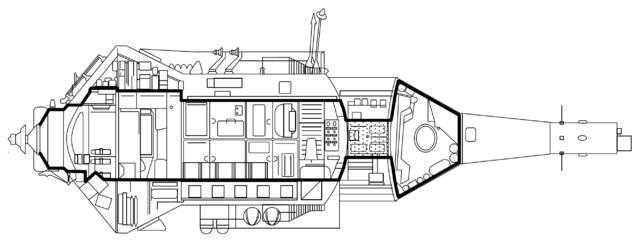Russian Research Module
The Russian Research Module (RM) was to be a Russian component of the International Space Station (ISS) that provided facilities for Russian science experiments and research.
History
The original designs of ISS featured two research modules shaped like a rounded Zarya, but Russian budget problems caused one of them along with the Universal Docking Module to be cancelled early in the program, leaving only one Research Module. This Research Module was scheduled to be built and launched in 2010 or later. In 2007 it was decided that, due to the continuing budget problems, the last Research Module was to be cancelled as well.
According to the schedule the module with scientific designation for the Russian Orbital Segment will be the FGB-2 based Multipurpose Laboratory Module Nauka approved after the cancellation of the original RM1 and RM2.
Additionally the Russian Orbital Segment contains two smaller modules, initially named Mini-Research Module (MRM) 1 and 2. The MRM1 Rassvet implements the Docking and Stowage Module of the original design and is based on the canceled Science Power Platform pressurised compartment. Rassvet was launched in 2010 by STS-132 on board the Space Shuttle Atlantis by NASA. MRM2 is one of the names for the original Docking Compartment 2 module Poisk, that was canceled, but later scheduled again for 2009 launch by Progress M-MIM2.
RKK Energia, the manufacturer of the ROS components, proposes to execute a similar to the original ISS plan with the addition of a Nodal module and two additional science/energy modules to the segment around 2013-2015.[1][2]
References
- ↑ "Russia Needs Billions More To Complete Its ISS Segment". Space-Travel.com. 14 April 2008. Retrieved 2009-01-29.
- ↑ Sergei Shamsutdinov (July 2008). "Program for Development of the Russian ISS Segment" (in Russian). Novosti Kosmonavtiki. Archived from the original on 6 June 2011. Retrieved 2009-02-15.



